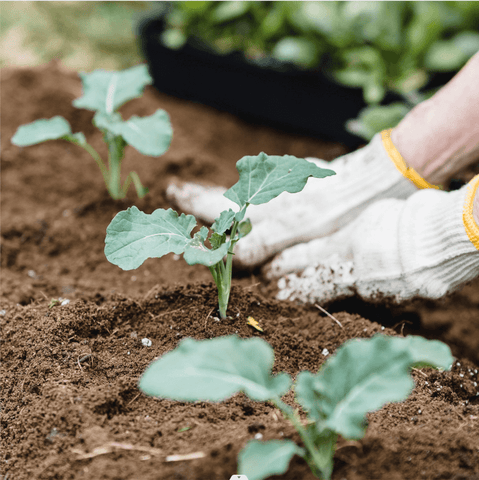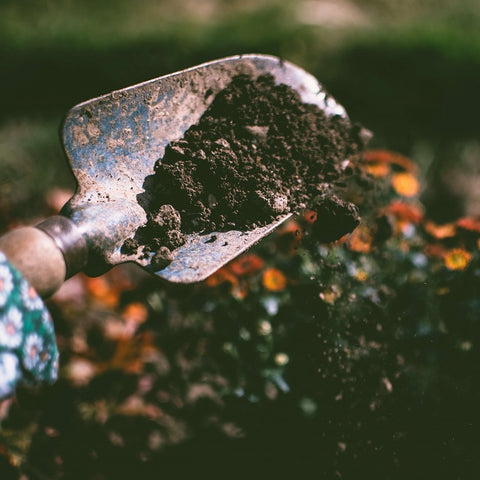The topsoil layer is where nutrients are delivered to plants, water is absorbed, sunlight helps plants grow, and wildlife and microbes interact with plants in various ways. In a nutshell, this is where the "magic" happens. Topsoil is technically the top layer of soil in any garden, yard, or field, and usually refers to a depth of 2 to 8 inches. Topsoil is the most productive and vital part of garden soil. The following content also has some reference value for raised garden beds.
When is adding topsoil good for your garden
If you're lucky enough to have perfect topsoil, you might be the envy of your gardening neighbors. But in general, most soils will occasionally benefit from the addition of topsoil. Topsoil can be washed away during the rainy season or moved around during construction work. Too many weeds, too many people, or exposure to foreign substances can deplete the soil of nutrients.
Tip: For vegetable gardens, most gardeners like to add 1 to 2 inches of fresh topsoil per year.
The practice of rotating crops is designed to help preserve the top soil and prevent soil erosion or nutrient depletion by changing the types of plants or crops planted each season.

If your flower or vegetable bed is dry or exposed to organic matter that increases acidity (like pine needles), adding fresh topsoil will improve its composition and bring the soil's pH to near neutral. To ensure optimal growing conditions, topsoil is supplemented as needed. Adding topsoil improves drainage, enriches soil nutrients, creates a better soil texture, and makes planting and weeding easier.
How is topsoil different from garden or potting soil?
In general, topsoil is much heavier than potting soil. Soil sold commercially as a garden or potting plant often has substances added to give it a light and fluffy texture, such as vermiculite or peat moss. When they are mixed together, they can help reduce the weight of the clay, and they help grow plants in the container.
Some garden soils have added additional organic matter to provide nutrients for food crops and flowers. Potting soils do not hold together well because they are too light to retain moisture effectively.
Topsoil type
Topsoil is often described in terms of its texture and composition, which are influenced by the minerals and substances naturally present in the soil.
Tip: A soil test will help you determine what kind of soil is suitable for the plants you want to grow. Soil testing can help you identify soil texture, composition, drainage, acidity, and mineral density.
Topsoil usually reflects the geology of its location. Soil types are also classified according to the size of the particles they contain, which is directly related to their texture. There are six main types of topsoil: clay, silt, sand, loam, chalk and peat.
Clay
Some clay is so thick that it can be used to make clay pottery. This heavy soil stays wet and cold in the winter, but tends to dry out in the summer. Clays often lack proper ventilation and drainage. They are easily compacted and difficult to dig into. Clay often needs to be modified to make it suitable for gardening, but some vigorous plants grow well.
Muck
Silt is soil of good texture. It is usually lighter in color and retains moisture fairly well. Its pH tends to be neutral and it is quite rich in nutrients.
Sand
The sand is light colored. It is usually low in nutrients and light in weight. Mixing sandy soil with other heavier soil can get a good texture, but sandy soil is easily washed or blown away, and erosion is a problem.
Loam
Loam mixes sand, silt, and clay into a medium texture mixture. This is an ideal soil that is usually rich in organic matter, has a good texture, is suitable for planting, and drains well. It is dark in color and retains its shape when squeezed together. Loams are usually mostly sandy or clay.

Piece of chalk
Chalky soil is light in color, porous, and contains large amounts of limestone or calcium carbonate, making it highly alkaline.
Peat
Peat is lightweight and contains organic matter. It has a good drainage system. Peat soil does not occur naturally in many places, so peat is often harvested and exported for use in soil amendments and blends to improve the texture and drainage of garden soil.
How to apply topsoil
You can get topsoil in a variety of ways. Buying in bulk is a good and economical option. Some topsoil sold in large quantities will have compost added to it. Or you can buy them in bags, which usually weigh 20 to 40 pounds.
You can apply topsoil at any time, but most gardeners prefer to add topsoil before planting in the spring. In the fall, it can also be added as topdressing to break down nutrients into the soil. You can add topsoil to the hole where the bush is planted. You can put a layer on the garden before or after planting.
If the soil you purchase is a little bumpy, mix it together with a wheelbarrow or tarp before spreading it out in the garden. You can either pour the soil out of the container or use a shovel to sow the seeds and then smooth it out with a rake or broom. Sprinkling a small amount of water on top of the soil can help hold it in place.
Tip: You can also add your own additives, such as peat moss, compost, manure, or other organic matter. Use a small shovel or spatula mix.
When to till the land
Tilling means turning over the soil, which helps to aerate the soil, control weed and insect activity, and prepare the soil for planting. It is best to plant a new garden in the spring, when the soil is dry and the weather is warmer. Depending on your region and climate, it can be from March to early June.
However, not every season requires farming; It is only necessary if you notice whether the soil is pressurized or not. Maintain a balance, as too much soil tillage can increase the likelihood of soil erosion, bring buried weed seeds to the surface, and cause nutrients to drain from the soil into waterways. In addition, killing beneficial insects in the soil can damage the vitality of the soil. Instead of farming, consider composting.
How often to fertilize
Each plant has different nutritional needs. The frequency varies, depending on the care guidelines for the particular plant.
Nutrients can be provided in the form of fertilizer, compost, or planting in already fertile soil. Potassium is usually the largest nutrient that supports flowering and fruiting plants. Plants like roses and hydrangeas are typically heavy feeders and need to be fed every two to four weeks, while flowering plants like aster and goldenflower don't need any supplementary feeding.

Most plants that produce fruits and vegetables need a lot of nutrients to grow well and much longer, so plan to fertilize or fill the soil according to the plants you're growing. You can skip fertilizer and opt for high-quality compost or other supplements such as fish emulsion or bone meal mixed in your topsoil, depending on the nutritional needs of your plants.









